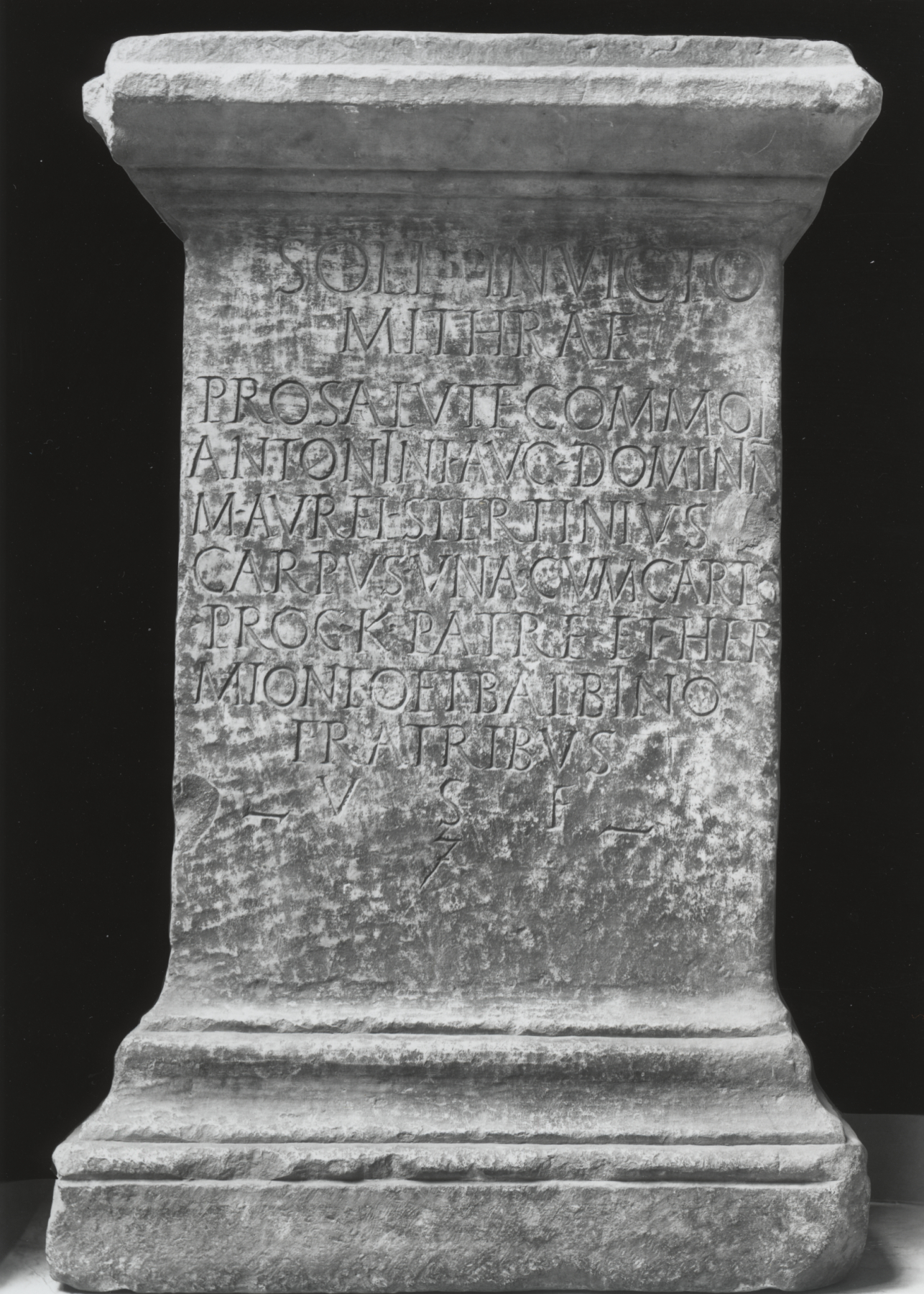Votive Altar to Mithras
(Roman Empire )
This altar was dedicated to the god Mithras for the health of the emperor Commodus by Marcus Aurelius Stertinius Carpus and his father Carpus, along with Hermioneus and Balbinus. The inscription was first recorded by Stephanus Pighius (1520-1604) in the late 16th century as on the banks of the Tiber River near the Pons Aemilius, presently the Ponte Rotto, in Rome.
Inscription
Provenance
Provenance (from the French provenir, 'to come from/forth') is the chronology of the ownership, custody, or location of a historical object. Learn more about provenance at the Walters.
First reported by Stephanus Pighius (1520-1604) as on the banks of the Tiber River near the Ponte Rotto, Rome. Cardinal Gaspare Carpegna, Rome, by 1699. Don Marcello Massarenti, Rome, by 1894, [mode of acquisition unknown] [marble no. 53]; Henry Walters, Baltimore, 1902, by purchase; Walters Art Museum, 1931, by bequest.
Conservation
| Date | Description | Narrative |
|---|---|---|
| 6/21/1961 | Treatment | cleaned |
| 7/20/1970 | Treatment | cleaned |
Geographies
Roman Empire (Place of Origin)
Measurements
H: 46 1/4 x W: 29 1/8 x D: 14 7/8 in. (117.5 x 74 x 37.8 cm)
Credit Line
Acquired by Henry Walters with the Massarenti Collection, 1902
Location in Museum
Not on view
Accession Number
In libraries, galleries, museums, and archives, an accession number is a unique identifier assigned to each object in the collection.
In libraries, galleries, museums, and archives, an accession number is a unique identifier assigned to each object in the collection.
23.17


